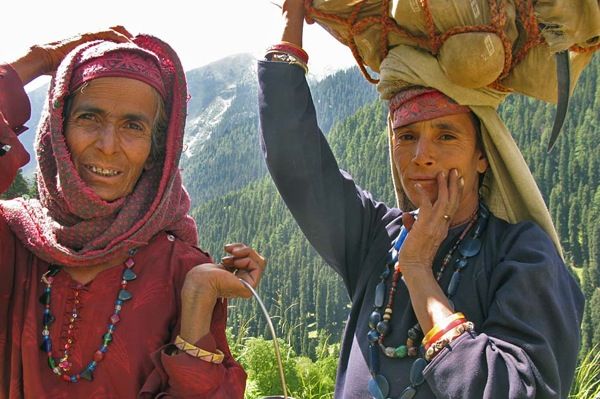On October 5 2005, a magnitude 7.6 earthquake struck Pakistan, Afghanistan, and India. The eighth most destructive earthquake on record, an estimated 75,000 people were killed. Millions more were left homeless as entire villages were flattened.
One of the worst hit areas was Muzaffarabad, the capital of Pakistan-administered Kashmir (PaK), and the surrounding villages. Due to the remote location of some of the areas, it took weeks for aid to reach an estimated 500,000 people in need of basic supplies. Already subjected to abject poverty, the misery of those who survived lingered as the brutal winter with no shelter or food set in.
Nearly five years later on January 12 2010, another massive earthquake struck. This time it was a magnitude 7.0 in Haiti. As the death toll in Haiti climbs past 150,000, and hope of finding survivors dwindles, reconstruction plans are underway. In the coming months, billions of dollars in aid will be spent on rebuilding Haiti's schools, hospitals, houses, government buildings, and communication centers. Five years into their rebuilding process, the people of Kashmir offer a lesson in rebuilding.
Rebuilding a community, empowering a nation
Poor infrastructure was one of the major causes of widespread destruction across Haiti and Kashmir. Most of the homes in Kashmir were built from timber and cement. They quickly crumbled during the quake. To safeguard the rebuilt infrastructure from any future calamities, stringent quake resistant designs were implemented.
According to the BBC tens of millions of dollars was spent on rebuilding cities and villages across PaK and an estimated 75,000 people were taught earthquake sound construction practices. Building techniques are usually passed from father to son. Thus, by training one generation, the next generation is educated. Though many people in Kashmir were able to rebuild, the BBC reported that a year after the quake, there were still over 400,00 people without a permanent shelter. Much of this was caused by delays in allocation of funds for rebuilding. As word leaders meet to discuss the possible decade long reconstruction plan for Haiti, some of the lessons from Kashmirs quake may prove useful for Haiti.
Swift and organized preparations for aid distribution in Haiti should be meticulously noted now to prevent bottlenecks in distribution in the future. Nearly a year after the quake in Pak many people were still waiting on money to arrive so they could build their houses. Those who did receive compensation for their homes often found it was not enough. But in the midst of the chaos there were certainly positive stories in Kashmir that should be repeated in Haiti. One of the greatest examples of hope in Kashmir was the continuation of education, despite the deaths of thousands of young people and the destruction of over the areas schools.
Rebuilding a generation, educating a nation
The earthquake in PaK struck in the middle of the school day. In a matter of moments over 18,000 students were killed as 6,000 school buildings collapsed.
"I remember watching my children go down this road," said Maului Abdul Khalia, the village prayer leader in Badihara a village in Pakistan-Administered Kashmir. "They didn't return." Khalia lost two of his sons in the quake. Of the 50 people who died in the village 49 of them were children.
Though a tragedy of this magnitude is hard to imagine, the story of Badihara is also an example of hope for the people of Haiti.
According to the BBC, three months after the quake children in Badhiara, were already back in class in make-shift tents over the ruins of their old school. The kids in this school, were clearly alarmed by the possibilities of another earthquake, but were eager to learn. The opportunity to attend class, said an aid worker in the region, gives children a sense of normalcy and their parents time to rebuild their own lives.
Going back to school may seem a long way off for the hundreds of thousands of children in Haiti, who have lost loved ones and their homes, but it is imperative to initiate this process. For Haiti to truly rebuild and prosper in the future, one of the initiatives that needs to be started now is education for its young people. But as both Haiti and Kashmir look towards the future, they must do so with the knowledge that they may be on borrowed time until the next quake hits.
Deadly Quakes in Seismic Hot Zones
The earthquakes in Pakistan-Administered Kashmir and Haiti were not unexpected. Scientists who study the regions predicted it would only be a matter of time before such calamities occurred. Earthquakes are caused when energy is stored up along geological fault line and suddenly released. In Kashmir, this geological fault line is called the Himalayan thrust. Though disastrous, the earthquake, which rocked PaK in 2005, was relatively weak compared to what scientists had feared.
Scientists predict that as time passes without a seismic release, and energy accumulates, a giant earthquake is likely in PaK and the surrounding area. Some experts warn that an earthquake ten times as strong could hit the region, potentially killing millions. The same is true in Haiti.
Haiti lies on the Enriquillo-Plantain Garden fault zone. According to the New York Times, seismic energy along the fault zone had been building up since the last major earthquake struck Port-a-Prince 240 years ago. Scientists who study the region predicted that a major earthquake would strike in 2008 and now say the worst is still to come. About 100 miles to the northwest of Haiti, is another fault that has not had a quake in 800 years.
As the people of Kashmir and Haiti rebuild their lives, on the fault lines of another potential disaster, the one thing they can count on is the resilient nature of the human spirit.
